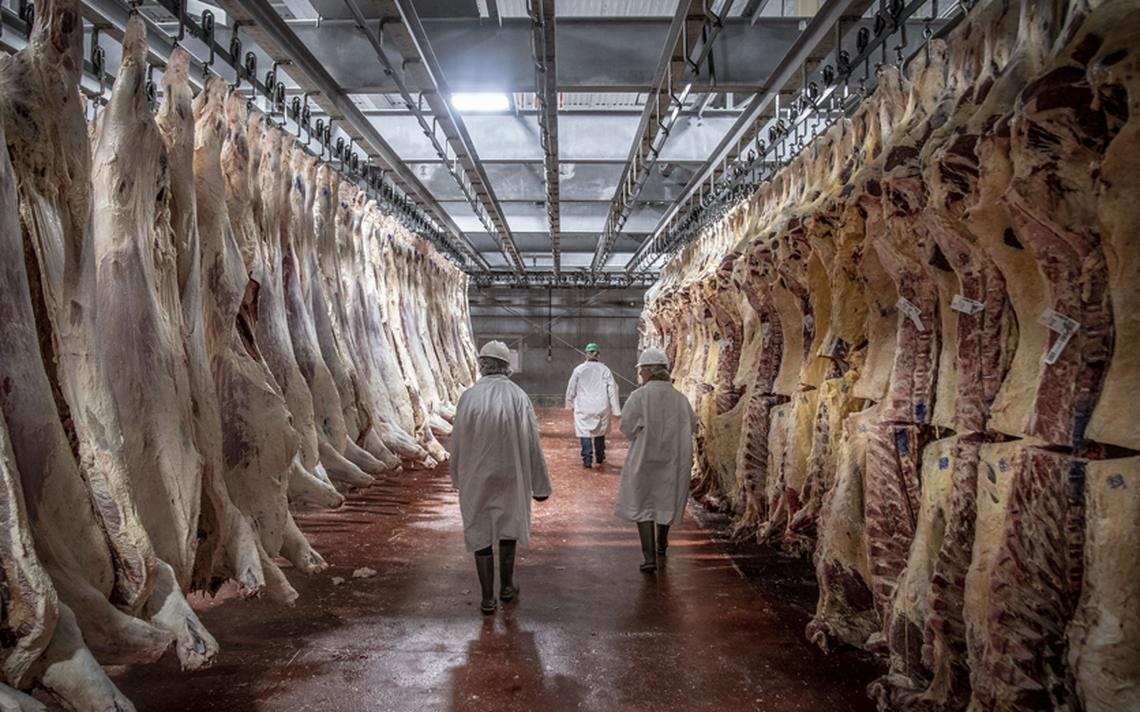Meat shortages in U.S. stores and booming exports to China lead to scrutiny in Washington
Last month, Oklahoma representatives Frank Lucas and Marcia Fudge introduced the Agricultural Security Risk Review Act, which would make the United States Department of Agriculture (USDA) secretary a member of the Committee on Foreign Investment in the United States (CFIUS).

Brian Duncan, a hog farmer in northwestern Illinois, says COVID-19 is creating “an economic tsunami” on his farm — and on those across the heartland.
“The supply chain is getting stretched. We really hit our low two weeks ago,” says Duncan. Plant shutdowns and a shortage of workers concerned for their health and safety caused a bottleneck, Duncan explains, adding that now “plants are slowly coming back on line.”
That bottleneck has created shortages of meat in American grocery stores; meanwhile, exports of meat, and in particular pork, are continuing to go to China.
Are meat exports to China a threat to American national security?
On April 28, President Trump invoked the 1950 Defense Production Act to keep plants open, and some in the White House are reportedly pushing to restrict meat exports to China, a linchpin of the U.S.-China trade deal that was negotiated last January.
President Trump has said he is not going to limit meat exports to China now, but the considerations reflect a broader recalibration of what constitutes a threat to U.S. national security.
Last month, Congressional representatives Frank Lucas of Oklahoma and Marcia Fudge of Ohio introduced the Agricultural Security Risk Review Act, which would make the United States Department of Agriculture (USDA) secretary a member of the Committee on Foreign Investment in the United States (CFIUS). A press release from Lucas’s office said the act aims to ensure the committee is “operating effectively and efficiently to determine if a transaction, including agricultural, threatens to impair the national security of the United States.”
Over the last year, Chinese demand for U.S. pork has soared, boosted by the U.S.-China trade deal and a swine flu that decimated China’s hog population.
The volume of pork exports from the U.S. to China quadrupled since March of last year, with China becoming the U.S.’s largest international customer for pork by volume within the last six months. Since January, the U.S. has been shipping one-tenth of its pork to China every month.
“China has become our number one export market, taking over the position that Mexico has had for many years, at least when it comes to a volume basis,” says Will Sawyer, lead economist at agricultural lender CoBank. “We do see continued growth of shipments. When we look at the weekly pork export data, it’s significantly higher than where we were last year.”
Smithfield Foods, the largest pork-processing company in the U.S., was bought by China’s WH Group Ltd. six years ago for $4.7 billion, and has since revamped the company’s operations to cater to demand from the Chinese market.
Last week, Smithfield announced it is shifting the focus of its Virginia plant back to American consumers, and “will immediately begin the process of retooling its Smithfield, Va. plant, installing equipment that will allow it to service additional domestic customers.” Smithfield did not respond to a request for comment.
“China is a very valuable customer.”
Sawyer expects meat supplies for U.S. grocery stores to shrink 30% by Memorial Day, and pork and beef prices to rise 20% higher relative to last year. American farmers may have to euthanize up to 7 million pigs, worth $700 million, in the second quarter alone, further diminishing meat supplies and adding to billions of dollars of losses.
As U.S. processing plants return to full capacity, this disruption could be temporary. The strong U.S. dollar and high pork prices could ultimately diminish demand from overseas markets, according to Sawyer.
“We do see reduced supplies, but higher prices fixes a lot of these situations. It fixes a lot of the trade flows; it fixes a lot of the producer losses that we’ve seen for both pork producers and cattle producers,” Sawyer says.
As livestock prices collapse, export markets like China could be crucial to stemming financial losses for American farmers. Industry associations predict losses of $13.6 billion for U.S. cattle producers, and $5 billion for U.S. hog producers.
“Given the weakness in hog prices, we need these exports to continue because if we lose these exports, whether that is driven by market forces, or non-market forces, then producers are going to be left with even weaker prices, and that will reduce future meat supplies further,” Sawyer says.
China has already emerged from the COVID-19 pandemic, and so has Chinese demand for American food. How a prolonged financial recession might impact American demand remains an open question. Though there are meat shortages on a regional basis, so far, supply has been more than enough for U.S. buyers.
Back at his farm in Illinois, Duncan says he is counting on American and Chinese consumers to utilize the meat from his backlog of hogs. “I am pro-trade and pro-export,” Duncan says. “China is a very valuable customer.”





